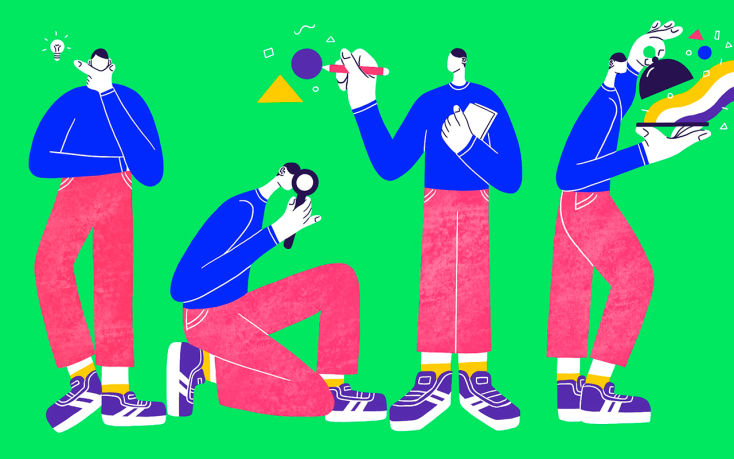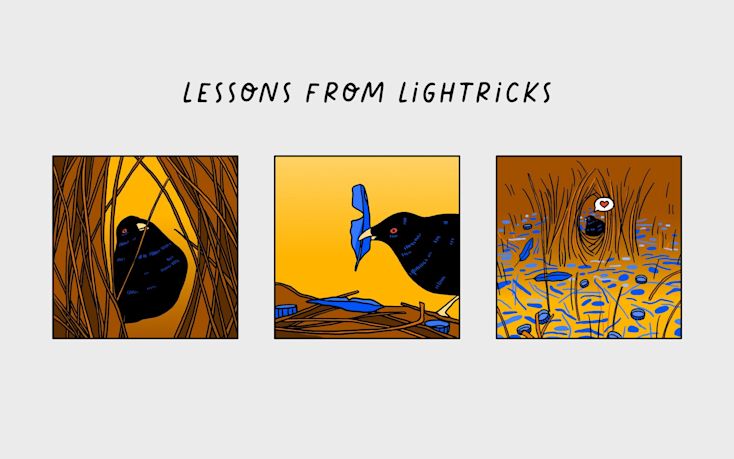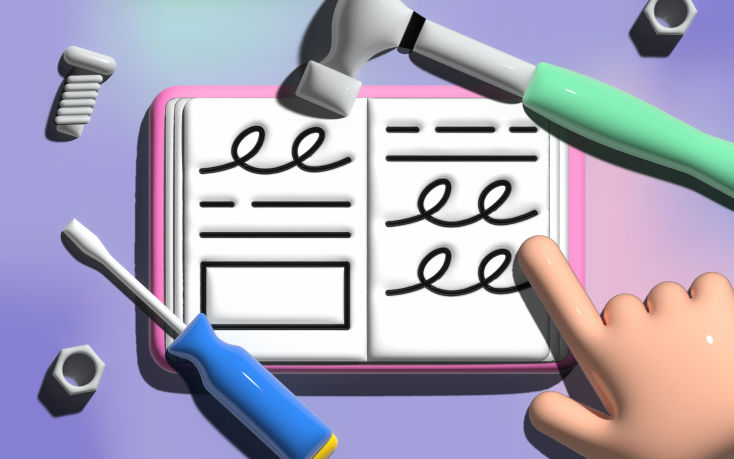How to embrace inclusivity in UX research

In user experience research and design, it’s our job to understand our audience and users. It’s the first subject on the syllabus in UX 101. But are we truly considering the full possibilities of who our users are? Are we being thoroughly inclusive?
When we’re inclusive, we consider the full range of human diversity with respect to ability, language, culture, gender, age, and other forms of human difference.
By keeping inclusivity in mind as we conduct research (and then build products, services, and experiences), we can unlock a greater understanding of who our users are. We can better define their needs, mindsets, and expectations. Not only will you look smarter and more in tune with your users, but your users will also feel seen and understood in return. Plus, when we focus on creating experiences to accommodate specific needs better, often the experience becomes better for everyone.
Inclusivity is good for business
Being inclusive isn’t solely about being a good human—it’s good for business. In her book Building For Everyone, Head of Product Inclusion at Google Annie Jean-Baptiste asserts that organizations who focus on building products and experiences that consider the diversity of the world and center on inclusion “have the opportunity to tap into trillions of dollars of global spend being left on the table by less-enlightened organizations.”
Similarly, in Writing is Designing, Andy Welfle and Michael J. Metts point out that when you exclude even one-tenth of one percent of the world’s population, that means there are about “755 million people who are less able to (or can’t) use your product, or pay for your service or experience your interface.”
Here’s an example of how that translates into dollars. According to a 2018 report from the American Institute for Research, disposable income for adults with disabilities totals US$500 billion. Jean-Baptiste ups that total on the global scale to about US$1 trillion.
Simply put: it’s a good business strategy to build authentic inclusive practices, products, and experiences.
Best practices for inclusivity in UX research
As any good UXer knows, a great experience starts with rock-solid research.
Jean-Baptiste notes, “The ultimate goal is to build an inclusive product, and you do that by building inclusion into the people and processes that design the product.” To be more inclusive in our experiences, we have to start with being inclusive in our research.
Jean-Baptiste provides a solid process to conduct research in an inclusive way. The basics are the same: understand your goal, define your audience, build your sample, choose your research method, conduct said research, and analyze and share results. Within that process, there are a few ways we can prioritize inclusivity.
Always ask who isn’t in the room
As you approach a study, ask who isn’t in the room. Who’s perspectives or experiences are missing? You should apply this to both your team (more on that in a minute) and your audience.
Take this example. If your goal is to understand how users navigate a website to find certain information, but you don’t consider those with poor vision or who use screen readers, you lose important user information. The research is insufficient, which could mean you’re excluding valuable users. The more user experiences you can account for, the more thoroughly you can understand their needs.
For our experiences to be truly inclusive of a lived experience, we have to include those perspectives from the start. As James I. Charlton wrote, “Nothing about us without us.”
Takeaway: Understand what perspectives are missing from your research.
Make your team more diverse
Once you know who isn’t in the room, try to get them there! It’s a simple concept, but it can be hard to execute. In any way you can, get diverse voices on your team.
Maybe you don’t have the budget to hire more researchers or contractors. Who else at your organization can you ask for help? Be mindful you don’t tokenize people. Consider how you can partner with your colleagues in an intentional way that makes them feel included. Maybe this looks like sending out a request for collaboration that explains the study and how you’re looking for more perspectives to ensure you get it right.
Ensuring diverse perspectives are represented on your team also makes your research better. When the researcher can relate to the experience of the user, they can ask better follow-up questions or see data trends that those who don’t have the same lived experience might miss.
For example, if you’re interviewing someone who doesn’t speak English as their first language and you ask how quickly they were able to “get up and running,” they might be confused by the turn of phrase. It may seem innocuous to a native English speaker but could leave the subject confused and feeling excluded. A researcher who has a similar lived experience can likely better navigate questions or help prevent the situation in the first place.
The more diverse perspectives you can bring into your work, the stronger it’ll be.
Takeaway: Make your team more diverse through hiring or collaboration.
Account for intersectional identities
Ok, so up to this point you identified who was missing and got them in the room or made sure they were accounted for in your study sample. You know who you want to speak with and who is helping guide those conversations.
But before you start your research, account for intersectional identities. Recognize that a Black 28-year-old woman who makes $80,000 a year living in Seattle has a different experience from a Black 28-year-old woman who makes $80,000 a year living in London. In this example, there is one difference, but it’s an important distinction. These two women navigate the world with different needs and preferences because they’re rooted in different cultures.
When we understand how these different identities interact, we can better hone our research to address challenges or opportunities. As a result, we can bring forth key insights we may have missed—insights that will likely result in a better experience or design.
Takeaway: Understand how needs change based on the different identities people have and include them in your work.
Consider your research method’s limitations
If I told you I could count on my hands how often my grad school professor said to not let the method drive the research, I’d be lying. We know we need to focus our research method on the goal and the question at hand. And we need to consider if there are limitations to how we best reach our audience.
Consider how much of your research relies on web access and web tools. Does that meet your audience’s needs? What if they don’t have a computer and rely on mobile devices? What if they use a screen reader or other technology because navigating web pages is difficult? Is there anything special you need to do to reach your intended audience better?
What if you’re trying to understand what features users need for an app centered on housing resources? How do you recruit the right people? Is a web survey the right method? What if you went to the neighborhood where the people lived to speak with them directly or offered ways for them to take the survey on the spot?
By taking this extra step, you can ensure your results accurately represent the needs of your audience.
Takeaway: Consider how to best reach your intended audience for better results.
You won’t be perfect, that’s ok
Remember, these are some best practices. You won’t get it right 100 percent of the time. It might not be possible. Do your best and recognize there will always be room for improvement. The more you can harness inclusive practices, the more your research—and ultimately your experiences—will be better for everyone.
Written by Kelly Erickson, Senior Content Designer, PTC. Kelly is a Senior Content Designer at PTC. But, first and foremost, she’s a writer. She has more than seven years of experience in digital communications, including in the sports industry, nonprofit communications, and the tech industry. She loves discovering stories that help people learn something new or understand a new perspective. She can’t help herself from sharing fun facts or the most recent thing she learned about human behavior. Kelly loves to learn and gets excited about understanding how people navigate the world. When she’s not writing or reading, Kelly is likely walking her dog Ginger (a red heeler mix with zero quit), or is spending as much time as possible outside, even in the frigid Minnesota winters.

Users report unexpectedly high data usage, especially during streaming sessions.
09:46AM24 Sep, 2024
Users find it hard to navigate from the home page to relevant playlists in the app.
11:32AM9 Mar, 2024
It would be great to have a sleep timer feature, especially for bedtime listening.
15:03PM13 May, 2024
I need better filters to find the songs or artists I’m looking for.
4:46PM15 Feb, 2024Log in or sign up
Get started for free
or
By clicking “Continue with Google / Email” you agree to our User Terms of Service and Privacy Policy



